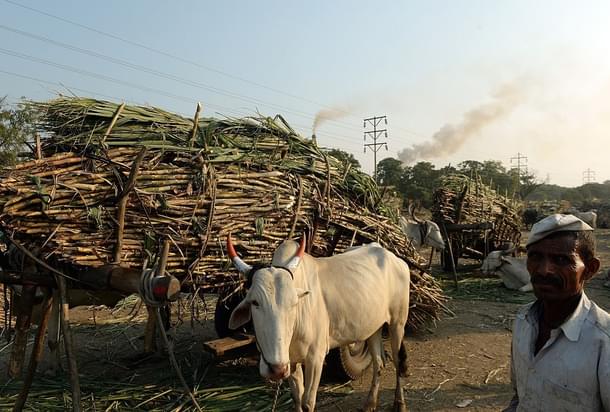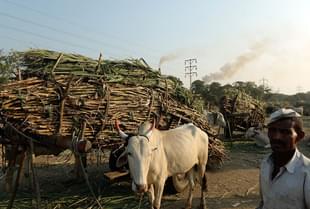Insta
Bad Addiction: Farmers In Drought-Prone Areas Of Maharashtra Go Back To Sugar Cultivation
Swarajya Staff
Oct 14, 2016, 06:28 PM | Updated 06:28 PM IST
Save & read from anywhere!
Bookmark stories for easy access on any device or the Swarajya app.


With heavy downpour having replenished Maharashtra’s previously dry reservoirs, the farmers in the state are on their way to cultivate sugarcane over a record area. As data suggests, the area under cultivation could reach over 10 lakh hectares.
Being a water-intensive crop, cultivation of sugarcane over large swathes of land will be possible because the reservoirs currently have 40 per cent more water compared to the previous year.
This decision to grow sugarcane is natural. Falling prices of kharif commodities like soyabean, cotton and onion have pushed farmers to take up cash crops like sugarcane. While this is not an issue in areas with annual supply of water, such as areas under cultivation in Uttar Pradesh and Bihar, cultivation of sugarcane makes no sense in areas that have limited supply and where water is a scarce resource.
In Maharashtra, where water storage now stands at about 83.20 per cent of the total capacity, there is no guarantee that the area will receive enough rainfall the next year or over several more years.
In the drought-prone Solapur belt, the situation is dire. The belt has the highest number of sugar mills, which attracts farmers to the cash crop. While the reservoir that supplies water to this belt is 100 per cent full, it had only 14-15 per cent of the total capacity the previous year.
With all its advantages, cultivation of sugarcane in water-scarce areas has severe consequences.
Writing for Swarajya, Jaithirth Rao suggests the following:
We must methodically and efficiently ‘incentivise and motivate’ a de-addiction from sugarcane farming and domestic sugar production just the way we have over the years pushed the addiction along. If in the process, we are seen as ‘incentivising’ pulses or oilseeds, we can see this as a bonus—always keeping in mind that another set of excess subsidies may result in another problematic ‘unintended consequence’ coming up 30 years from now. A ‘National Crop Policy’ is not a Stalinist/Maoist idea that we can or should adopt. But a conscious policy to dismantle a structure that has developed over many years, using incentives and signals, rather than force and fiat, is the only serious option left. (For more on this, read here.)





